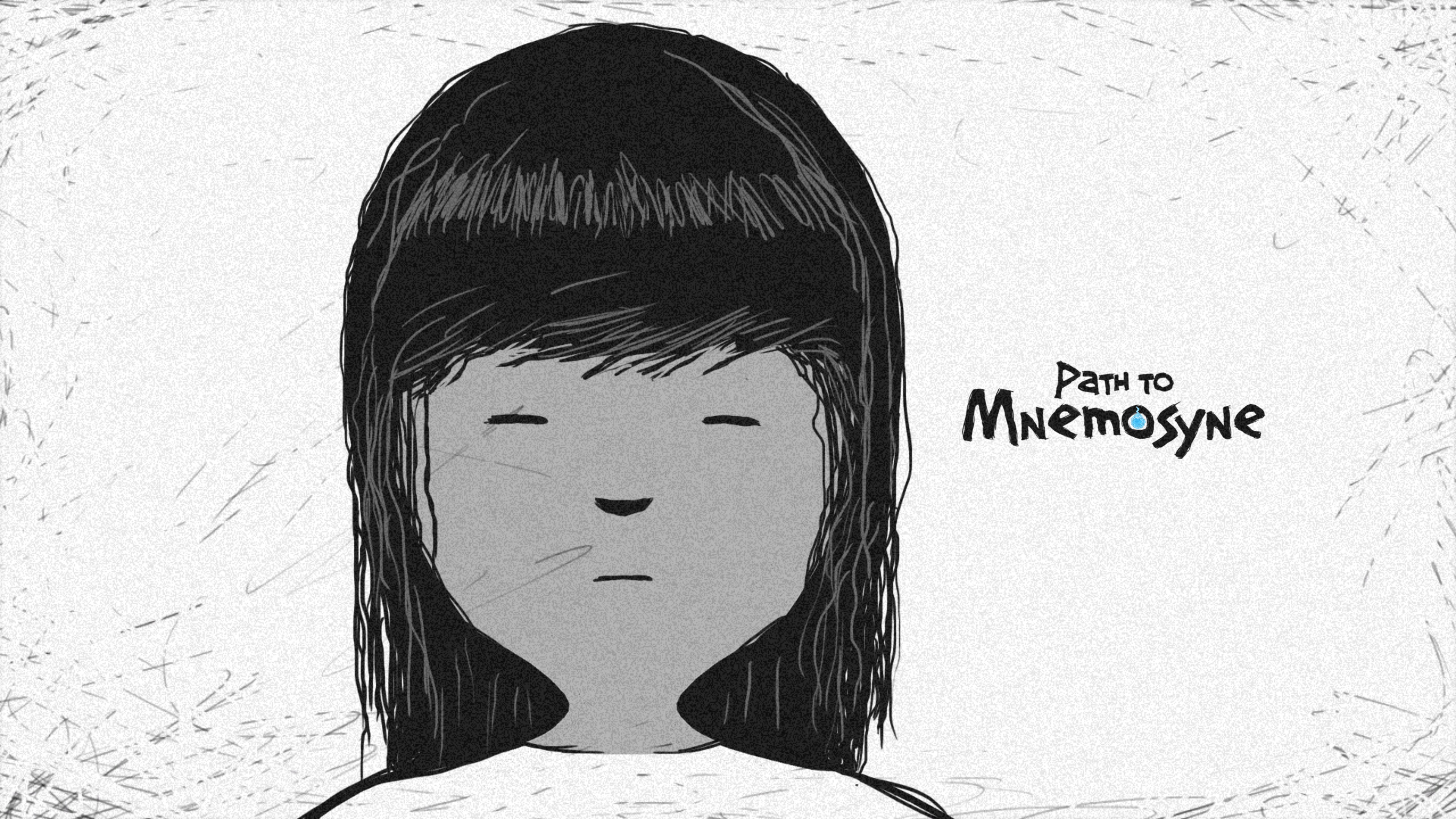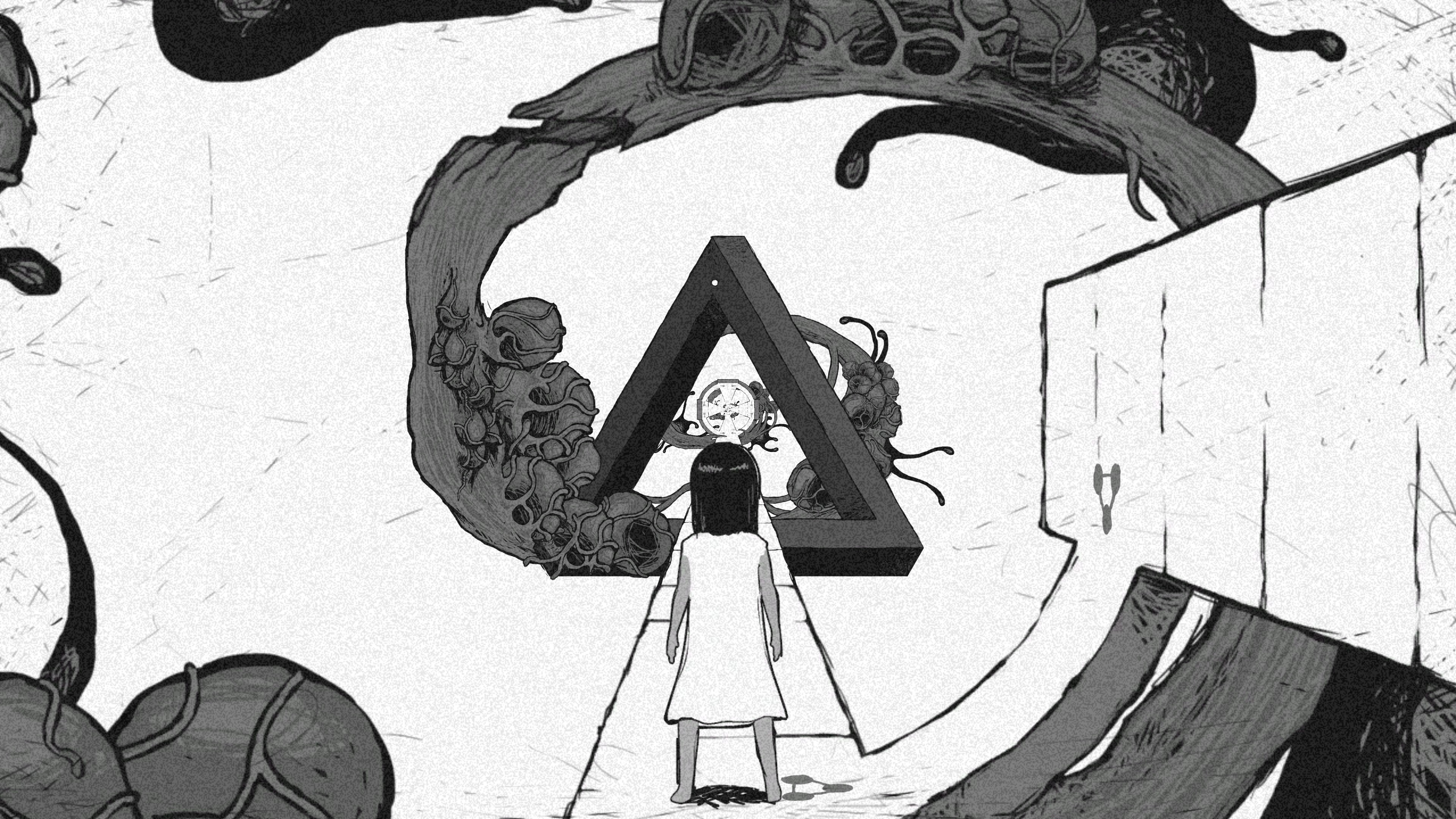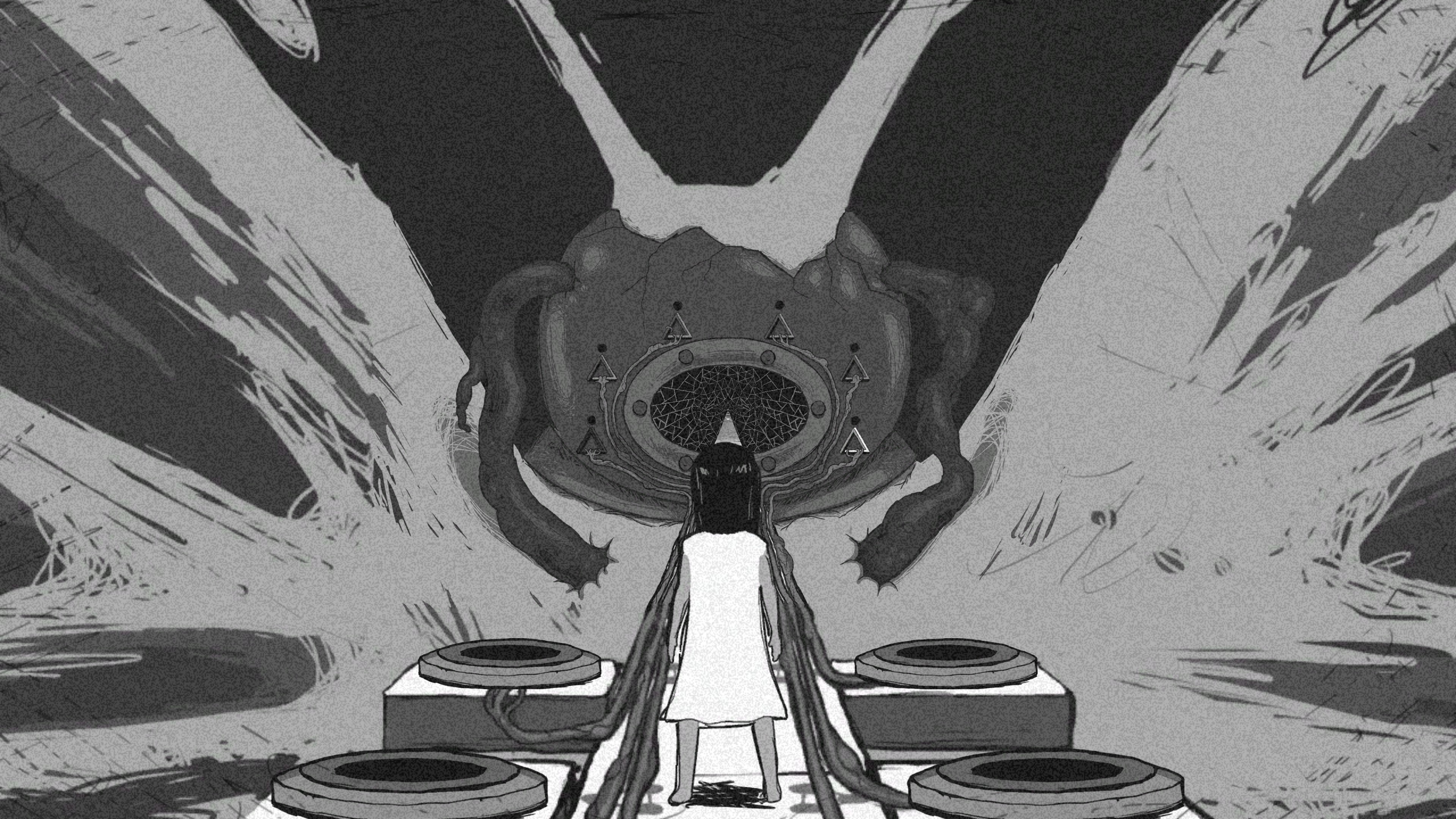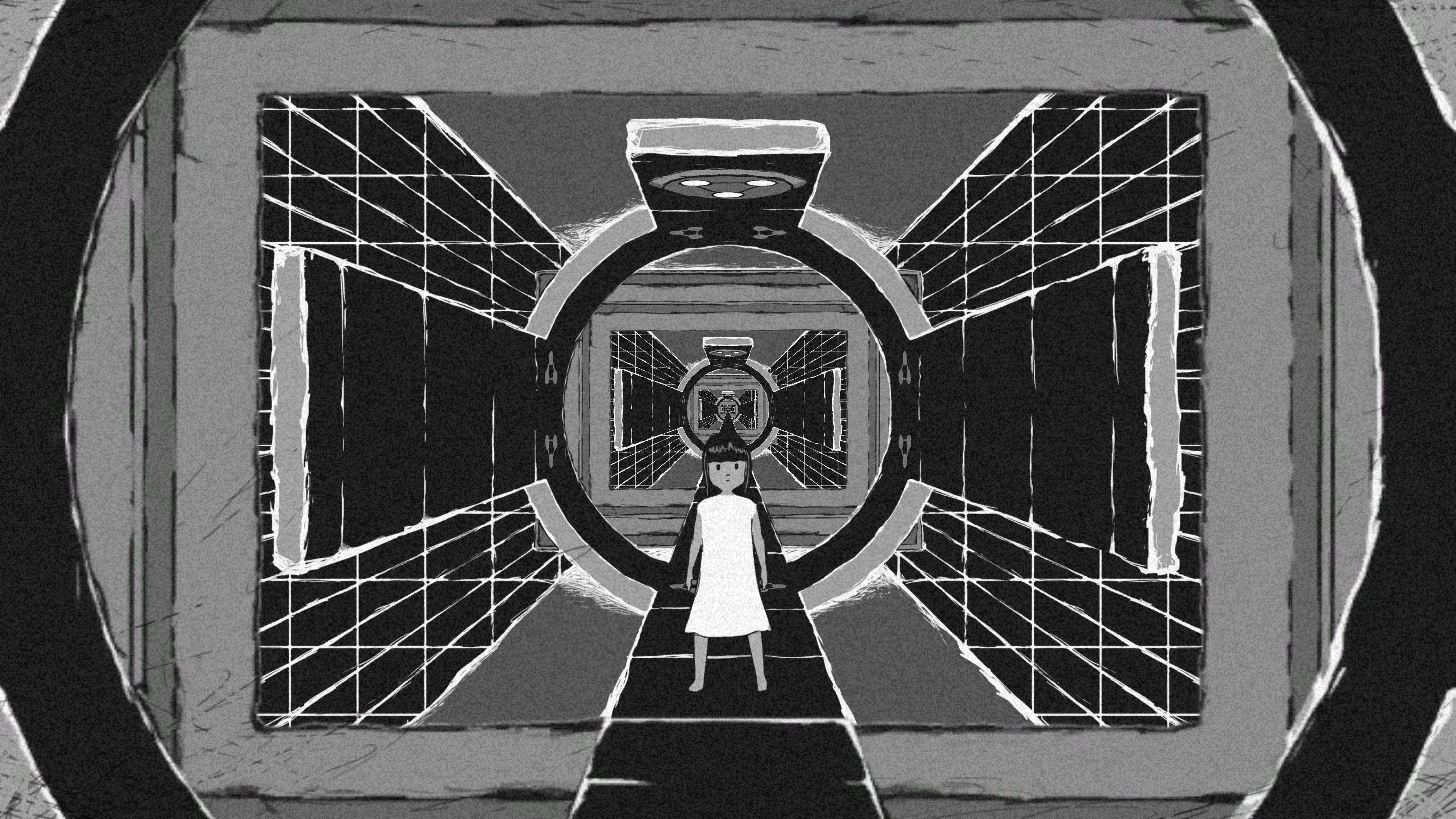Path to Mnemosyne Review
A game that isn’t as interesting as it looks, but at least looks very interesting indeed.

Path to Mnemosyne is a game with a paradox at its heart. At once aspiring to be a relaxing, visually fascinating experience and a genuinely challenging puzzle game, it often seems to lose track of its own identity, undulating between overly-simplistic brainteasers and really difficult, innovative puzzles. This, along with a plot which fails to see itself through, makes the game a somewhat disappointing, albeit thought-provoking, enigma.
Set on a path of monochromatic, kaleidoscopic infinite zoom, the game certainly has a healthy measure of original artistic endeavor. Indeed, the way the world continually looms up at you as if hurtling through a hall of mirrors might just be truly unique, whilst the array of disturbing images that surround the path compliment the increasingly sinister tone of the narrator.

Almost every image you see outlying the path is deliciously creepy. From half-formed faces to giant spiders and boars, to a fetus floating in an amniotic void, the environment very much conveys the sense that the internal world/dreamscape/drug-induced trauma you are walking through is something worth getting to the other side of, and one that I was intrigued to ascertain some answers from.
There’s also something strangely stodgy about the atmosphere, though. I think partially because you are simultaneously invited to melt into the game’s surrealist environment whilst trying to complete puzzles with often obscure solutions, the game felt like trying to complete some mildly challenging maths homework whilst watching an episode of Bob Ross’ The Joy of Painting. In other words, Path to Mnemosyne made me feel as if I was being forcibly relaxed whilst also made to jump through some not-always-very-interesting hoops.
This effect, of course, is presumably intentional, adding a layer of challenge in a way that is undoubtedly novel. However, playing a puzzle game with a constant feeling of arresting drowsiness was actually quite unpleasant: it made the simpler puzzles feel monotonous and repetitive, whilst making the more difficult ones less engaging.
Thankfully, Path to Mnemosyne is at least quite straightforward on a mechanical level. Each section of the path asks you to complete puzzles within its three-dimensional space in order to find the required amount of blue orbs (the only splash of colour throughout the game), and the end of each of section sees you complete a more abstract two-dimensional where you use these orbs to rebuild the memories of the young girl you play as.
The first set of puzzles involve standing on buttons in the environment in the right order in order to unlock one of the aforementioned orbs. Although these can be dull and simplistic – there is one which involves repeating a pre-given sequence several times – there are some which utilize sound as part of the puzzle, which adds an interesting extra flavour. Some of them were very unintuitive; I’m unsure how I solved one of them to this day.

The second set of puzzles sees you correctly aligning circles by rotating circular beams which encircle the path. This often involves using the other paths which you can move on to by shuffling sideways, although the ultimate goal will always follow the original path. Oddly, these puzzles were often significantly easier than the first set, although this can be put down to their improved design making them more intuitive.
The final puzzle – which brings the game rather abruptly to its end – is perhaps the most innovative, utilising both lighting and sound in its solution. Unlike the other puzzles, it involves near-perfect timing (an odd addition to throw in right at the end), and, in this sense, is an outlier to the others. Unfortunately, it falls into the same trap of repetition as its forebears: once you work out how to do it, you are made to repeat the process five times, at which point it becomes simply a matter of doing the same solution over and over.

I’ve mentioned already that this game intrigued me on a narrative level, and also that it seemed to be cut short, so I may well as address the narrative in its entirety. In some ways though, I feel like there’s not that much more to say. There’s something happening; at first, it seems that an external voice is trying to arouse you from some fugue state – perhaps a coma, dementia or drug-induced psychosis – but as the game progresses, it continues to throw in more questions without any answers.
Indeed, near the end, a second external voice is introduced and adds a second physical object to find on the path, yet she only appears fleetingly and you only end up finding a handful of these ‘fragments.’ And then it all ends rather abruptly with a short message that I won’t spoil. The message, I suspect, is supposed to be rather profound, but with a lack of adequate framing seems rather pithy.
I can’t help but feel that all of the awards Path to Mnemosyne has listed on its Steam page underline the lost potential of this project. Or, perhaps, this game simply isn’t as interesting as it looks, although it does look very interesting. This is by no means a bad game: it’s polished, it looks great, and everything works as it should. It definitely hooks you, and some of its puzzles are as creative as any you might find. However, as the more cynical of us might say is expected for a game so geared toward the visual, when you scratch below the surface, Path to Mnemosyne leaves a lot to be desired.
